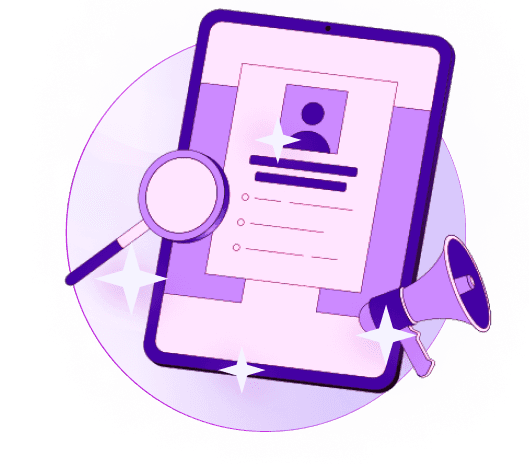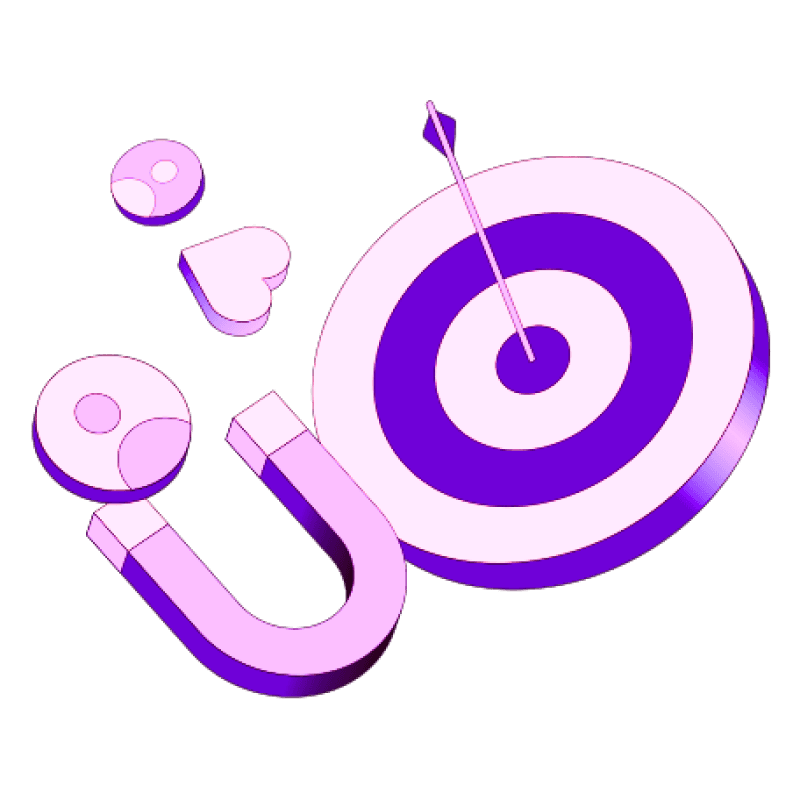Blogs
Articles

What is Intent leads? How to Find Intent Leads That Actually Convert
High-intent leads aren't random prospects. They are potential customers who display clear signs that they're ready to buy. These prospects send out buyer intent signals that show their readiness to make a decision. We can get ahead of our competitors by spotting these signals early and reaching out at the right moment.
Intent-based marketing packs a real punch. The ability to customize our messages based on a potential customer's plans makes our communication more meaningful and valuable. Our targeted strategy helps us attract quality leads that have a better chance of turning into actual revenue.
This piece will walk you through intent leads - what they are, why they matter, and the best ways to find and nurture them. You'll learn how to stop wasting time on cold prospects and start building relationships with buyers who are eager to make a purchase.
What is Intent Leads?
Intent leads have changed the way we identify potential customers. These prospects show their interest through online behaviors that signal they're actively looking for solutions. Traditional leads rely on demographics, but intent leads come from digital footprints and actions that reveal real buying interest.
Intent leads become powerful through the signals buyers leave behind. You can spot these signals when prospects visit product pages repeatedly, download materials about making decisions, check pricing pages, or ask for demos.
The buyer behavior data comes in two main forms:
First-party intent data: You collect this directly when people interact with your digital properties, including website visits, content engagement, and demo requests.
Third-party intent data: This comes from external sources across the web and shows research about competitors, activity on industry forums, and other online behavior.
High-intent leads bring exceptional value because they're closer to making a purchase. These prospects understand your product's worth and have clear expectations. They've shown real engagement that proves they're ready to buy, not just browsing casually.
Research shows that 67% of B2B buyers search the internet before they purchase products. This fact makes intent-based approaches crucial to finding qualified opportunities.
What are the Importance of Intent Leads in Marketing?
Intent leads have revolutionized how marketing teams achieve better results. These high-intent prospects show they are ready to make purchasing decisions.
Companies that target based on intent see dramatic improvements in their marketing results. Your conversion rates can improve 3-5 times compared to standard lead generation approaches when you focus on prospects who already show interest in your solutions. On top of that, marketing teams can use their resources more effectively by targeting audiences with clear interest instead of cold prospects.
Intent data for lead generation offers four key marketing advantages:
Precision targeting - Marketing messages reach potential buyers at the time of their highest interest
Shorter sales cycles - High-intent leads move through the funnel quickly and need fewer touchpoints
Higher ROI - Intent-based campaigns deliver better returns because resources focus on prospects who are most likely to convert
Competitive edge - Your brand stays ahead of competitors by connecting with prospects during their active solution research
How to Identify and Generate Intent Leads
High-intent leads show clear signs of being ready to purchase through their digital behavior. These signals emerge when we track prospect activities in platforms of all types.
Your potential buyers will show their interest through several key indicators:
Multiple visits to pricing or product pages
Downloads of decision-stage content like case studies or buyer guides
Time spent with comparison tools or ROI calculators
Requests for demos or pricing information
Different types of intent data provide unique evidence-based insights. First-party data tracks interactions directly from your website, emails, and CRM. Strategic collaborations with platforms like G2 provide second-party data, while third-party data reveals broader web behavior patterns.
Quick response time is a vital factor in converting high-intent leads. Companies that respond within 5 minutes of a high-intent action are 100x more likely to connect with leads than those who wait 30 minutes.
Your intent lead generation strategy should include these proven approaches:
Map key touchpoints in your customer's experience
Use specialized tools to track intent signals
Separate high-intent signals from general browsing behavior
Study patterns and historical data
The next step is to tailor your outreach based on specific intent signals. A prospect who explores your security features needs messaging focused on that aspect.
Persana can help you identify your most valuable intent leads and connect with prospects when their interest peaks.
Analyzing and Segmenting Intent Data
Raw intent data needs proper analysis and segmentation to maximize its value. The first step gathers data from first-party sources like your website, content downloads, and sales questions. Third-party sources track online searches, page views, and ad clicks. This complete approach gives a clear view of target accounts throughout their buying experience.
Smart segmentation organizes accounts by their intent and involvement levels. To name just one example, accounts that download content or fill out lead forms become "sales qualified leads" (SQLs). Those who visit pricing pages without contact might be "marketing qualified leads" (MQLs). These patterns help teams reach out to accounts that show the highest intent.
Lead scoring should reflect intent signals that match your ideal customer profile. Activities like product page visits and demo signups deserve higher scores.
Intent data works best when combined with existing customer details. The mix of intent signals, demographics, purchase history, and website behavior creates detailed audience segments. Intent strength and timing matter differently at each stage. Different signals connect to specific buying stages and help nurture leads better.
This practical approach turns raw intent data into applicable information that boosts conversion rates across your funnel.
What are the Strategies for Generating Intent Leads?
Smart strategies that generate intent leads need practical methods to reach prospects when they're most interested. You can capture high-value leads through several proven tactics that work well.
Content marketing designed to attract high-intent prospects serves as the life-blood of intent-based lead generation. Decision-stage resources like comparison guides, pricing breakdowns, and case studies naturally draw in prospects who actively seek solutions.
Search marketing optimization is a powerful strategy too. Prospects use search engines during their research phase. Bidding on high-intent keywords for purchase decisions shows most important results. These keywords typically include "pricing," "alternatives," "comparison," or "reviews."
Email marketing delivers results when you segment it based on intent signals:
Prospects who view pricing pages get ROI calculators
People downloading industry reports receive relevant case studies
Product feature browsers see detailed specifications
Notwithstanding that, account-based marketing combined with intent data produces remarkable outcomes. Companies that show multiple intent signals deserve more resources because they're likely to convert.
These strategies work better with personalization based on specific intent signals. Messages that address prospects' exact needs match their interests with your offerings. Their behavior reveals these needs clearly.
Intent leads vs. Interest leads
The difference between interest and intent plays a vital role in lead qualification. Interest shows simple curiosity about your product or service. A prospect might download a white paper, check your website, or visit your trade show booth. These actions show some interest but not readiness to buy.
Intent leads show something more powerful. These prospects know how to take action and want to do it. They don't just browse - they evaluate solutions and get ready to make decisions. Their actions reveal real buying intent when they visit pricing pages often, get product specifications, or ask for demos.
Numbers tell the real story: only about 10% of your total addressable market wants to buy at any time. This means 90% of prospects who show interest aren't ready to talk about purchases yet.
This difference matters a lot. Your pipeline gets clogged with prospects who never convert when interest lacks intent. Look at this example: someone might like luxury sports cars and visit dealerships but lack both money and plans to buy.
Companies that track multiple intent signals see their conversion rates jump by 37% compared to those that track just one signal. Your sales team can focus resources better on prospects ready to buy by prioritizing high-intent leads.
Conclusion
Intent leads represent a radical alteration in the way businesses identify and convert prospects. This piece explores how these high-value leads are different from traditional prospects. They show purchase signals rather than mere demographic fit.
Companies that prioritize intent-based strategies gain clear advantages over competitors who still rely on outdated approaches. Your team's efficiency improves by focusing on the 10% of prospects who are ready to buy, which leads to better conversion rates.
First-party and third-party intent data create a complete picture of prospect behavior together. Your sales team can enter conversations at the perfect moment when buyers research solutions like yours.
Quick responses to intent signals make your team 100 times more likely to connect with prospects than delayed outreach. Your team's success depends on developing systems that flag and prioritize high-intent behaviors.
Key Takeaways
Intent leads represent prospects showing clear purchase readiness through their digital behaviors, offering marketers a strategic advantage over traditional demographic-based targeting.
• Intent leads convert 3-5x better than standard leads because they demonstrate actual buying signals, not just demographic fit
• Speed is critical - responding within 5 minutes makes you 100x more likely to connect than waiting 30 minutes
• Only 10% of your market is actively buying at any time, making intent data essential for identifying ready prospects
• Combine first-party data (your website) with third-party data (broader web behavior) for comprehensive buyer intelligence
• Focus on high-intent signals like pricing page visits, demo requests, and comparison tool usage rather than casual content downloads

Create Your Free Persana Account Today
Join 5000+ GTM leaders who are using Persana for their outbound needs.
How Persana increases your sales results
One of the most effective ways to ensure sales cycle consistency is by using AI-driven automation. A solution like Persana, and its AI SDR - Nia, helps you streamline significant parts of your sales process, including prospecting, outreach personalization, and follow-up.



